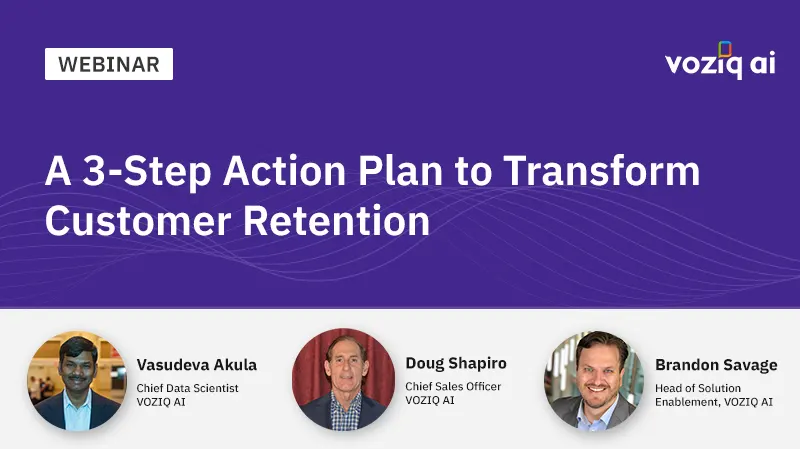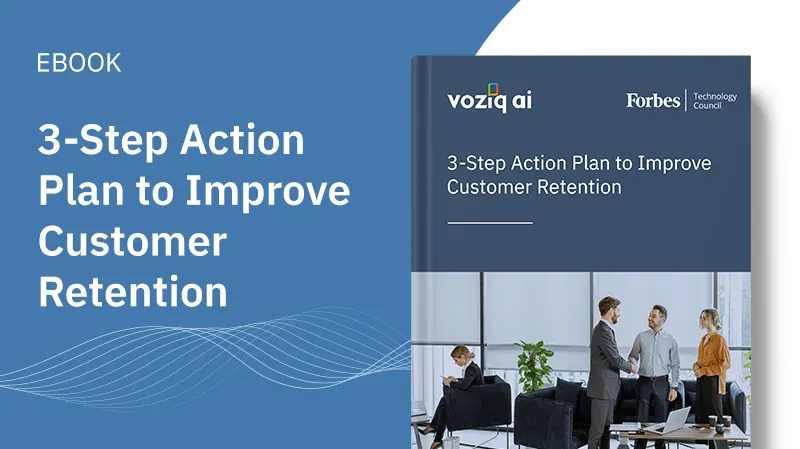Embrace Proactive Engagement to Reduce Churn Risk

Embrace Proactive Engagement to Reduce Churn Risk
Proactive engagement is an approach to customer support, where companies actively make the first move to understand their customers and sort their issues. Companies must keep reinventing their customer engagement strategy to stay competitive and profitable at the same time. Acquiring new customers or retaining old ones depends a lot on how you engage with your customers. A proactive customer engagement strategy creates a secure connection between a customer and a brand that gets strengthened over time, ensuring mutual value.
An unengaged customer is more prone to churn risk:
Proactive care support depends on your company’s ability to anticipate your customers’ needs and issues before they experience it or ask for it. An unengaged customer is more like to put in extra effort to get things done leading to lower satisfaction, higher tendency to cancel and above all missed retention opportunities.
Besides these, from a company’s perspective, the number of support tickets increases, customer loyalty scores, customer lifetime value, and the word-of-mouth referrals fall significantly. All these can significantly impact your bottom-line revenue negatively.
Four steps to creating proactive engagement opportunities
Following are the four steps to create meaningful proactive engagement opportunities:
1. Leverage contact center data and text analytics technologies:
Contact centers generate millions of data annually in the form of text notes that your service representatives notate during every call. By applying text analytics to this enormous mass of unstructured data, you can analyze big data efficiently, understand issues at scale, and make sense of your customers’ needs. This will help in early detection of churn prone customers, areas of high customer effort, and dissatisfaction causes.
Call center data can be considered as inferred customer feedback which can help in better understanding your customers and thus help in creating windows of opportunities for yourself to engage just in time, make favorable offers and retain more at-risk customers.
2. Create unified behavioral profiles to identify top dissatisfied/at-risk customers:
By utilizing agent notes as customer feedback, the sample data size for understanding your customer is significantly beefed up and the insights derived out of this data can easily be presumed to be highly accurate and actionable. This data can be further strengthened with additional data such as demographics, transactional history, surveys, etc. This unified customer record creates newer possibilities for deeper customer segmentation, resulting in better understanding of customer behaviors.
This behavioral profiling can help in identifying typical patterns for customers who are dissatisfied and segment these customers based on their propensity to churn. Once such segments are created, it becomes easy for any company to come up with meaningful outreach programs that can be very effective in handling churn.
3. Behavior-driven communication using machine learning models:
Behavior-driven communication involves specifying behavior that is consistent with customers’ actions towards their requirements. Linking behaviors with goals can be a daunting task. But with the help of AI and machine learning technologies, this can be easily achieved. The role of AI in predicting future customer actions has never been more important. Based on the most recent interaction, machine learning models can analyze the behavior and determine the actual requirement of the customer as well as predict the future behavior of the customer based on the past historical data. This will allow the company to go ahead and help the customer meet his requirements without any extra customer effort.
Such a behavior driven communication process will help your company to stay ahead of your customer and competition and be well-prepared to handle the next interaction with the customer whenever the opportunity arrives and provide them with timely and personalized engagement to improve their customer satisfaction.
4. Intelligent call routing to highly skilled professionals:
Your front-line agents are your best bet to save your at-risk customers. A well-equipped and experienced professional can make your customer’s life easy effortlessly. You would want all your at-risk customers to be handled by efficient agents. With the prior knowledge of risk propensity of your customers, you can intelligently route calls from such customers to your retention specialists to deliver the best retention offer for risk recovery and increase the chances of customer retention.
By creating opportunities to address your at-risk customers’ specific needs by high skilled professionals, you increase the chances of effective engagement by leaps and bounds.
The positive impact of proactive outreach on customer churn:
Did you know that a simple company outreach can reduce churn by 11%? Even though most companies do not follow proactive outreach religiously, it is a promising approach to safeguard your existing customers. This approach is seen to lessen the efforts that the customer has to take to resolve their issues. Considering this research from Frost and Sullivan, 87% of customers have a positive image of companies when they act proactively and follow-up at regular intervals regarding the issues and service.
Conclusion:
As a final point, companies must recognize that interactions with customers must become more personalized and proactive today to counter the growing churn risk. By always staying one step ahead and acting proactively, companies can consistently improve the customer experience and eliminate customer issues before they snowball into churn problems.
Originally Published on Business 2 Community.






